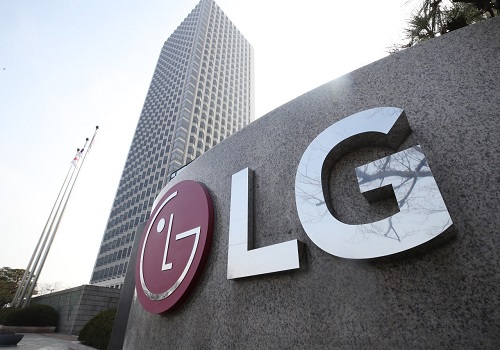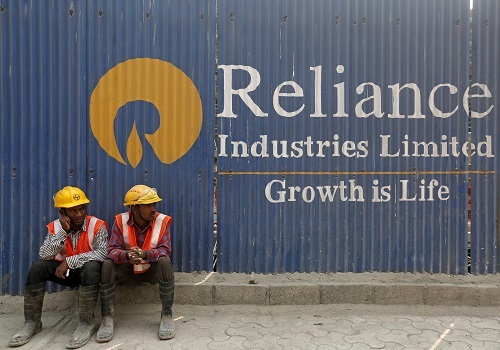Aluminium trading range for the day is 202-205.8 - Kedia Advisory

Follow us Now on Telegram ! Get daily 10 - 12 important updates on Business, Finance and Investment. Join our Telegram Channel
Gold
Gold experienced a marginal decline of -0.04% yesterday, settling at 65583, influenced by a firmer U.S. dollar and anticipation surrounding remarks from U.S. Federal Reserve Chair Jerome Powell following the central bank's policy meeting. The market awaited clarity on potential interest rate cut moves, with recent data showing solid increases in U.S. consumer and producer prices, dampening hopes for early Fed rate cuts. Higher interest rates tend to diminish the attractiveness of holding non-yielding assets like gold. Investors are currently pricing in a 55% chance of a Fed rate cut in June, according to the CME FedWatch Tool. Meanwhile, the Bank of Japan's decision to end eight years of negative interest rates and other unconventional policies had ripple effects, contributing to dwindling physical gold demand in Asia. High gold prices led consumers to abstain from fresh purchases, prompting dealers to offer deep discounts, particularly in India and China. In China, gold premiums decreased to $15-$25 per ounce, the lowest levels since July, while Indian dealers offered discounts of about $36 an ounce, the highest since March 2023. Similar trends were observed in Singapore and Hong Kong, with gold sold at par to modest premiums. In Japan, dealers sold gold at par to slight premiums. Technically, the market saw long liquidation, with a 5.85% drop in open interest, settling at 12538. Gold currently finds support at 65400, with a potential test of 65215 below this level. On the upside, resistance is anticipated at 65745, with a move above suggesting a test of 65905.
Trading Ideas:
* Gold trading range for the day is 65215-65905.
* Gold prices drifted lower as the U.S. dollar firmed
* The dollar gained 0.5% and hit a more than two-week high
* The Bank of Japan ended its eight years of negative interest rates and other remnants of its unorthodox policy.
Silver
Silver closed lower by -0.28% at 75,287, influenced by the persistent strength of the U.S. dollar and elevated Treasury yields ahead of the Federal Open Market Committee (FOMC) rate decision. The anticipation surrounding the Fed's stance on interest rates heightened following recent hotter-than-expected consumer and producer price inflation readings, which reduced optimism about the possibility of an early rate cut. Investors are eagerly awaiting updates on economic projections from Fed Chair Jerome Powell and his colleagues, especially given the significant market impact of their statements. Amidst this backdrop, the U.S. housing sector has shown signs of stabilization, with construction of new homes picking up. The latest data from the U.S. Commerce Department revealed a notable increase in residential construction, with a 10.7% jump in new home construction to a 1.521 million annualized rate, surpassing expectations. Building permits also surged by 1.9% to a seasonally adjusted annual rate of 1.518 million in February, marking the highest level since August. This robust performance in the housing market exceeded market projections and indicates positive momentum in the sector. Technically, the silver market experienced long liquidation, with a drop in open interest by -2.57% to settle at 25,678 contracts, coupled with a price decline of -209 rupees. Key support levels for silver are identified at 74,840, with potential downside testing towards 74,400 levels. On the upside, resistance is expected at 75,720, with a breakout possibly leading to further gains towards 76,160.
Trading Ideas:
* Silver trading range for the day is 74400-76160.
* Silver prices edged lower as the dollar remained stubbornly strong
* The U.S. housing sector shows some signs of stabilization as construction of new homes picks up.
* Building permits in US surged by 1.9% to a seasonally adjusted annual rate of 1.518 million in February 2024
Crude oil
Crude oil saw a notable uptick of 1.25% yesterday, closing at 6887, driven by several factors including reduced crude exports from Saudi Arabia and Iraq, alongside signs of stronger demand and economic growth in China and the United States. However, gains were tempered by the prospect of increased oil exports from Russia, particularly as Ukrainian attacks on oil infrastructure curtailed domestic refining activity. Despite the positive momentum in global oil markets, Russia announced plans to boost oil exports through its western ports in March, potentially adding nearly 200,000 barrels per day (bpd) to its monthly plan of 2.15 million bpd. Additionally, the U.S. Energy Information Administration (EIA) forecasted a rise in oil output from top shale-producing regions in April, reaching the highest level in four months. Production from these regions is expected to exceed 9.77 million bpd, with the Permian basin leading the increase, reaching the third-highest monthly output on record at 6.1 million bpd. Furthermore, production in the Eagle Ford and Bakken regions is anticipated to rise, signaling an overall uptick in U.S. oil production. From a technical standpoint, the market witnessed fresh buying with a significant 39.19% increase in open interest, settling at 5029. Crude oil is currently finding support at 6817, with a potential test of 6748 below this level. On the upside, resistance is expected at 6926, with a move above likely leading to testing the 6966 level.
Trading Ideas:
* Crudeoil trading range for the day is 6748-6966.
* Crude oil up on reduced Saudi, Iraq exports and stronger demand signs
* However, gains were capped by the prospect of rising exports from Russia
* U.S. oil output from top shale-producing regions will rise in April to the highest level in four months
Natural gas
Natural gas surged by 2.05% to settle at 144.6 on the back of revised forecasts projecting colder weather and increased heating demand over the next two weeks. This upward momentum was further fueled by a decline in U.S. output, which has been steadily decreasing since gas prices hit a 3-1/2-year low in February. Energy traders noted a significant drop in gas output in the lower 48 U.S. states, with March's average falling to 100.20 billion cubic feet per day (bcfd) from February's 104.10 bcfd. This decline in production, coupled with projections of rising demand, contributed to the bullish sentiment in the market. LSEG's forecast for gas demand, including exports, indicated an increase from 114.70 bcfd to 115.0 bcfd, reflecting the anticipated surge in heating requirements. Moreover, gas flows to major U.S. liquefied natural gas (LNG) export plants experienced a decline, with March's average dropping to 13.30 bcfd from February's 13.70 bcfd. This decline in LNG exports further tightened supply dynamics, supporting prices. Technically, the market witnessed short covering, as evidenced by a significant drop in open interest by -19.29% to settle at 48,817 contracts, alongside a price increase of 2.9 rupees. Key support levels for natural gas are identified at 142, with potential downside testing towards 139.4 levels. On the upside, resistance is expected at 147.2, with a breakout possibly leading to further gains towards 149.8.
Trading Ideas:
* Naturalgas trading range for the day is 139.4-149.8.
* Natural gas climbed on forecasts for colder weather and higher heating demand.
* Energy traders also noted that futures were supported by a continued drop in U.S. output
* Gas output in the lower 48 U.S. states fell to an average of 100.20 bcfd so far in March
Copper
Copper experienced a decline of -1.21% yesterday, settling at 756.4, as investors took profits following the metal's recent rally and amidst a strengthening dollar ahead of the U.S. Federal Reserve's rate decision. Speculators on the Comex raised their long positions to the highest level in over 13 months by March 12, becoming net long, as per data from the U.S. Commodity Futures Trading Commission. In addition to profit-taking, concerns over copper inventory levels and consumption in China weighed on sentiment. Warehouse inventory tracked by the SHFE reached its highest level since April 2020, reflecting stagnant consumption in China, despite industrial output climbing 7% annually over January and February, surpassing expectations. Retail sales in China also rose by 5.5% year-on-year. However, copper cathode output in February witnessed a month-on-month decrease but a year-on-year increase, with cumulative output from January to February showing a notable rise. Despite some smelters undergoing overhauls and reducing raw material inputs, overall copper output in March saw a slight increase compared to February. Technically, the market saw long liquidation with a significant drop in open interest by -22.29% to settle at 2748. Copper is currently finding support at 752.3, with a potential test of 748.1 below this level. On the upside, resistance is expected at 763.2, with a move above likely leading to testing the 769.9 level.
Trading Ideas:
* Copper trading range for the day is 748.1-769.9.
* Copper prices fell as investors locked in profits from the metal's recent rally.
* Copper inventory in warehouses tracked by SHFE last week climbed to 286,395 tons, the highest since April 2020.
* Comex copper speculators raised their long positions to 69,941 contracts, the highest level in more than 13 months.
Zinc
Zinc experienced a decline of -1.36%, settling at 217.95, influenced by developments in production and economic indicators. Glencore's resumption of production at its Nordenham zinc smelter after more than a year of care and maintenance weighed on market sentiment. The halt in production in 2022, along with other European smelters, due to surging power prices following Russia's invasion of Ukraine, had disrupted supply dynamics. However, in China, industrial output surpassed expectations, growing by 7% annually over January and February, indicating resilience in the manufacturing sector. Despite this, concerns persist in the real estate sector as property investment continued to decline, albeit at a slower pace of 9% compared to the previous month. China's refined zinc output in February showed a month-on-month decrease of 11.36%, primarily attributed to smelter closures for maintenance during the Chinese New Year holiday. Additionally, tight zinc concentrate raw material supply further delayed the resumption of production for some companies, leading to reduced output. The concentration of output reductions in provinces such as Hunan, Sichuan, Shaanxi, and Guangdong contributed to supply constraints. Technically, the zinc market witnessed long liquidation, marked by a significant drop in open interest by -12.03% to settle at 2,874 contracts, alongside a price decline of -3 rupees. Key support levels for zinc are identified at 216.6, with potential downside testing towards 215.2 levels. On the upside, resistance is expected at 220.3, with a breakout possibly leading to further gains towards 222.6.
Trading Ideas:
* Zinc trading range for the day is 215.2-222.6.
* Zinc dropped as Glencore's Nordenham zinc smelter starts ramping up output
* China’s real estate remained a worry as property investment in the same period fell 9%
* In February 2024, China's refined zinc output was 502,500 mt, a month-on-month decrease of 64,400 mt or 11.36%.
Aluminium
Aluminium faced a slight decline of -0.37% yesterday, settling at 203.85, with attention drawn to the surge in aluminium stocks monitored by SHFE warehouses, which increased by approximately 80% in February. Despite this, aluminium production in Yunnan, China's fourth-largest aluminium-producing region, remained curtailed due to the annual dry season. Production is expected to resume as power supply conditions improve, but growth may remain constrained due to limited increases in power supply and scheduled maintenance at smelters. However, the downside in aluminium prices seemed limited as upbeat data from China revived hopes for increased demand. China's industrial activity surged by 7% year-on-year in January-February 2024, surpassing market expectations. Additionally, China's primary aluminium output in the same period climbed by 5.5% year-on-year, supported by better profits for smelters. Despite the positive outlook, concerns were raised about sliding profits in recent months due to higher alumina prices, a key raw material for smelters. Moreover, China's imports of unwrought aluminium and related products saw a significant increase of 93.6% compared to the previous year, reaching 720,000 tons, indicating robust demand. From a technical perspective, the market witnessed long liquidation, with a notable drop in open interest by -12.73% to settle at 2707. Aluminium is currently finding support at 202.9, with a potential test of 202 below this level. On the upside, resistance is expected at 204.8, with a move above likely leading to testing the 205.8 level.
Trading Ideas:
* Aluminium trading range for the day is 202-205.8.
* Aluminium dropped SHFE stocks surged by approximately 80% in February.
* However, downside seen limited as upbeat data from China reignited hopes for a surge in demand.
* China's primary aluminium output in the first two months of 2024 climbed 5.5% from the same period a year earlier.
Cotton candy
Cotton candy prices closed lower by -1.04% at 60,880, driven by various factors impacting supply and demand dynamics in the cotton market. The Cotton Corporation of India (CCI) raised its crop production estimate for the current season, indicating higher expected supply levels. This increase in production, combined with lower demand from mills, contributed to downward pressure on prices. Additionally, Cotton Australia raised its production estimate for the year due to favorable weather conditions, further adding to the supply outlook. In the United States, cotton production forecasts for the current season were revised lower based on recent data, with reduced ending stocks projected. However, the global cotton supply and demand estimates for the year showed higher production, consumption, and trade, albeit with lower ending stocks. Increased production in India offset declines in the United States and Argentina, while higher consumption in China and India boosted global demand. Amidst these developments, the Southern India Mills' Association (SIMA) cautioned textile mills against panic buying of cotton due to recent price hikes. Capacity utilization at mills has increased, with a significant portion of cotton already contracted for exports. However, SIMA highlighted the potential dampening effect on export demand as domestic cotton prices approach international levels. Technically, the cotton candy market witnessed long liquidation, with a notable drop in open interest by -9.4% to settle at 241 contracts, alongside a significant price decrease of -640 rupees. Key support levels for cotton candy are identified at 60,660, with potential downside testing towards 60,450 levels. On the upside, resistance is expected at 61,140, with a breakout possibly leading to further gains towards 61,410.
Trading Ideas:
* Cottoncandy trading range for the day is 60450-61410.
* Cotton dropped as CCPC raised crop production for the current season to 323.11 lakh bales
* Cotton Australia raised its estimate for Australian production this year to "at least" 4.5 million bales
* SIMA urges textile mills to avoid panic buying as cotton prices rise, global supply expected to increase post July.
* In Rajkot, a major spot market, the price ended at 29357.1 Rupees dropped by -0.11 percent.
Turmeric
Turmeric experienced a marginal decline of -0.17% yesterday, settling at 17514, driven by profit booking following recent price gains. Below-normal supplies and active festive demand had previously supported prices, leading to a positive bias in trading. The impact of lower production was evident in arrival pace, with arrivals in major APMC markets significantly lower compared to the previous year, indicating prevailing supply tightness likely to encourage stockists to buy turmeric at every dip in prices. Turmeric's seasonality suggests higher prices during March due to festive buying, with upcoming festivals and the commencement of the wedding season expected to keep buyers engaged in active purchasing. Production is forecasted to drop by about 14% year-on-year due to lower cultivation area and tumbling yields, estimated to range between 9.2-9.5 lakh tonnes. In terms of exports, turmeric exports during April-January 2024 dropped by 3.52% compared to the previous year, with a slight rise observed in January 2024 compared to December 2023 but a notable drop from January 2023. Conversely, turmeric imports during April-January 2024 decreased by 22.34% compared to the same period in the previous year, with a decline observed in January 2024 compared to December 2023 but a significant rise from January 2023. In Nizamabad, a major spot market, turmeric prices ended lower, reflecting the overall market trend. Technically, the market witnessed fresh selling with a slight increase in open interest, settling at 15490. Turmeric is currently finding support at 17168, with a potential test of 16824 below this level. On the upside, resistance is expected at 17778, with a move above likely leading to testing the 18044 level.
Trading Ideas:
* Turmeric trading range for the day is 16824-18044.
* Turmeric dropped on profit booking after prices gained amid below normal supplies
* Festivals ahead in coming months and commencement of wedding season demand is likely to keep buyers engage.
* Production is likely to be dropped by about 14% Y-o-Y due to lower area under turmeric.
* In Nizamabad, a major spot market, the price ended at 16384.4 Rupees dropped by -1.32 percent.
Jeera
Jeera prices experienced a decline of -0.64%, settling at 23,315, driven by multiple factors influencing supply and demand dynamics in the market. A significant increase in jeera acreage during the current rabi season, reaching a four-year high in key producing states of Gujarat and Rajasthan, weighed on prices. Farmers expanded cultivation areas substantially, driven by record prices observed in the previous marketing season, highlighting the strong correlation between market prices and acreage. Support for jeera prices stemmed from emerging weather risks in Rajasthan and Gujarat, which could potentially affect yields adversely. Challenges such as lower water availability, fewer cold days, and concerns about fusarium wilt and pest attacks further added to supply-side concerns. Despite anticipation of a potentially bumper crop in India, global demand for Indian jeera slumped as buyers preferred alternatives like Syria and Turkey due to relatively higher prices in India. Jeera exports witnessed a significant decline during April-January 2024, dropping by 25.33% compared to the same period in the previous year. However, January 2024 saw a slight increase in exports compared to December 2023, although exports remained lower compared to January 2023. This decline in exports reflects the subdued demand in the global market amidst ample supplies from other major jeera-producing countries like China, Egypt, and Syria. Technically, the jeera market observed fresh selling pressure, with a notable increase in open interest by 1.92% to settle at 2,865 contracts, alongside a price decrease of -150 rupees. Key support levels for jeera are identified at 23,130, with potential downside testing towards 22,930 levels. On the upside, resistance is expected at 23,510, with a breakout possibly leading to further gains towards 23,690.
Trading Ideas:
* Jeera trading range for the day is 22930-23690.
* Jeera prices dropped as jeera acreage hits a four-year high
* Support also seen in wake of emerging weather risk in Rajasthan and Gujarat that may affect the yield.
* Stockists are showing interest in buying on recent downfall in prices triggering short covering.
* In Unjha, a major spot market, the price ended at 25924.75 Rupees dropped by -0.01 percent.
Views express by all participants are for information & academic purpose only. Kindly read disclaimer before referring below views.












 320-x-100_uti_gold.jpg" alt="Advertisement">
320-x-100_uti_gold.jpg" alt="Advertisement">










